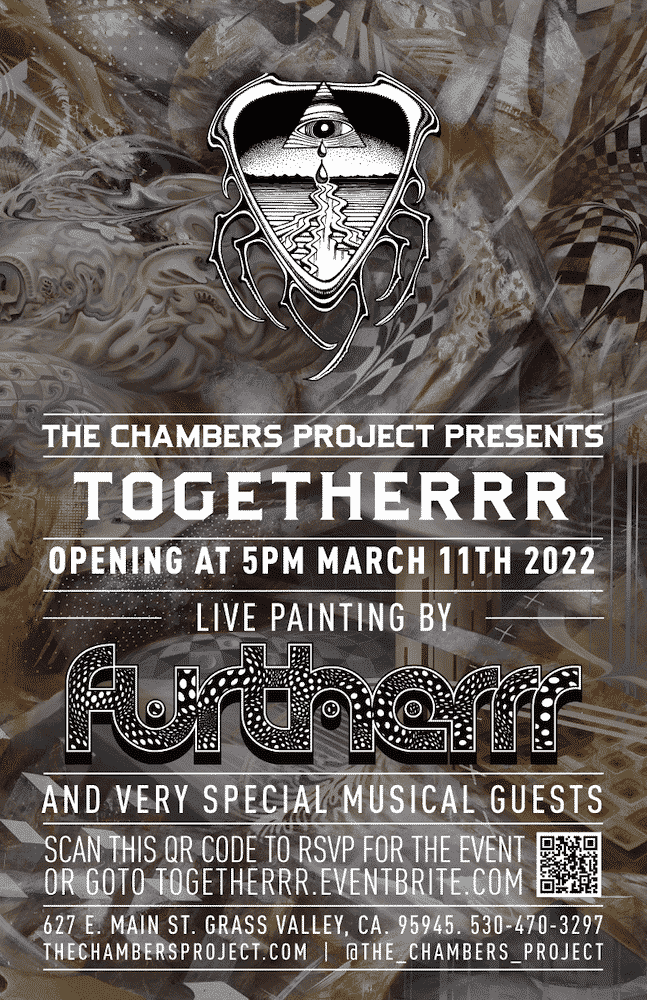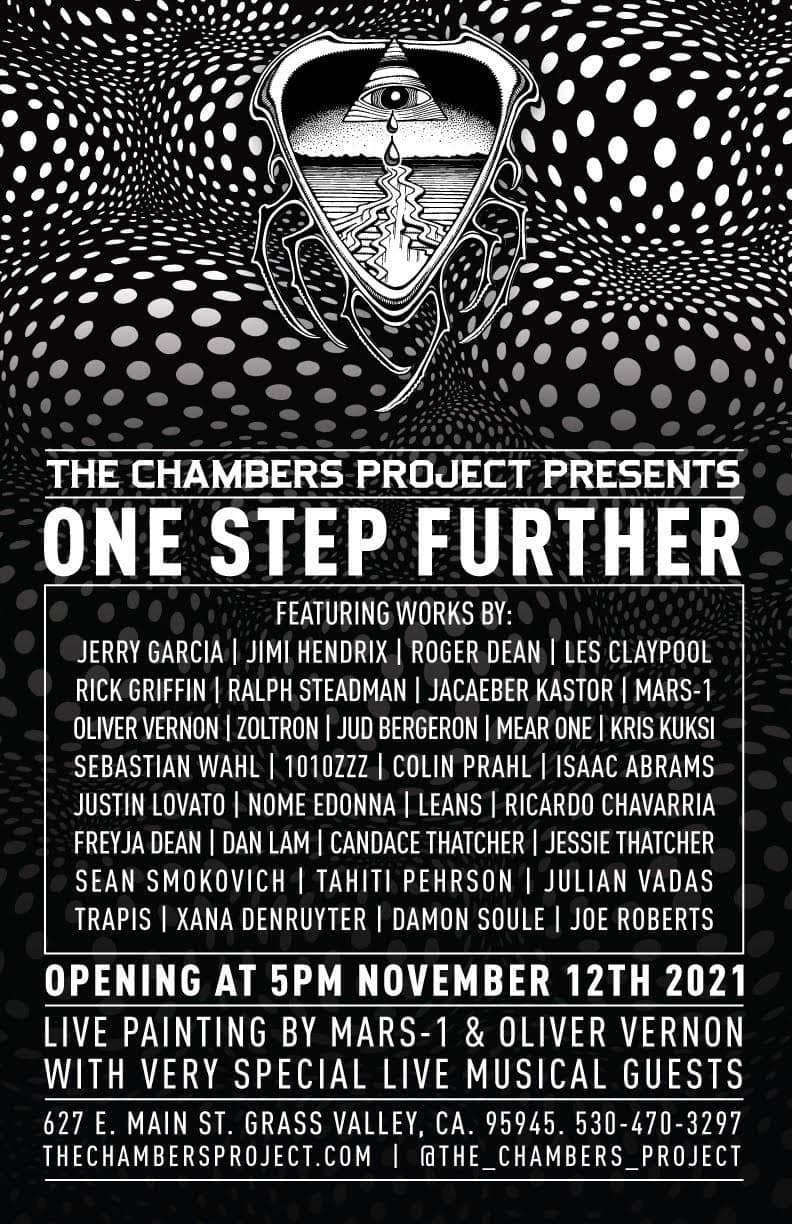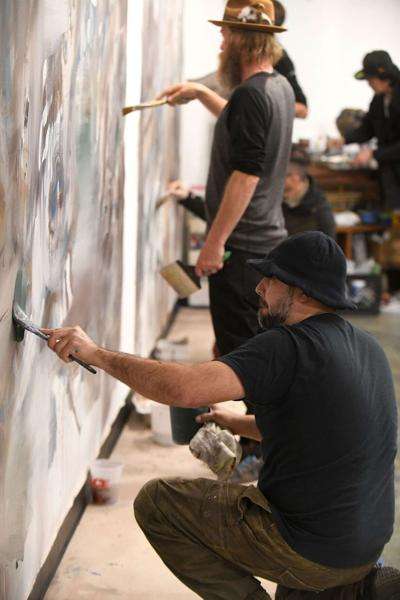Damon Soule
Damon Soule’s bohemian story began when he entered this world as the son of hippy travelers who landed in New Orleans in the eighties. Too poor for private and too crusty for charter, he was placed in a public school where he was one of five Caucasians on a roll of five thousand kids. Isolated and ostracized, he struggled to find friends in his teens, and he ran wild with those he had on the slippery streets of the French quarter, breathing the skunky scents of sticky Bourbon Street, and drinking and partying with the vampires.
Looking for trouble, and finding too much of it in New Orleans, by seventeen Soule was sent from Louisiana to Colorado to join his gypsy mother, who had returned to university. He enrolled at a Denver high school, but within a few weeks he discovered a like-minded community of alienated youth in the skate park across the street, and never attended again. Unlike his previous experiences as a solitary outsider in New Orleans, in Denver he found a diverse community of friends from a wide variety of races and cultures, all sharing an interest in skating and punk-rock, and together they formed a tagging crew called The New School Art Tribe, spraying scattered graffiti on spare city walls. With them, he discovered LSD.
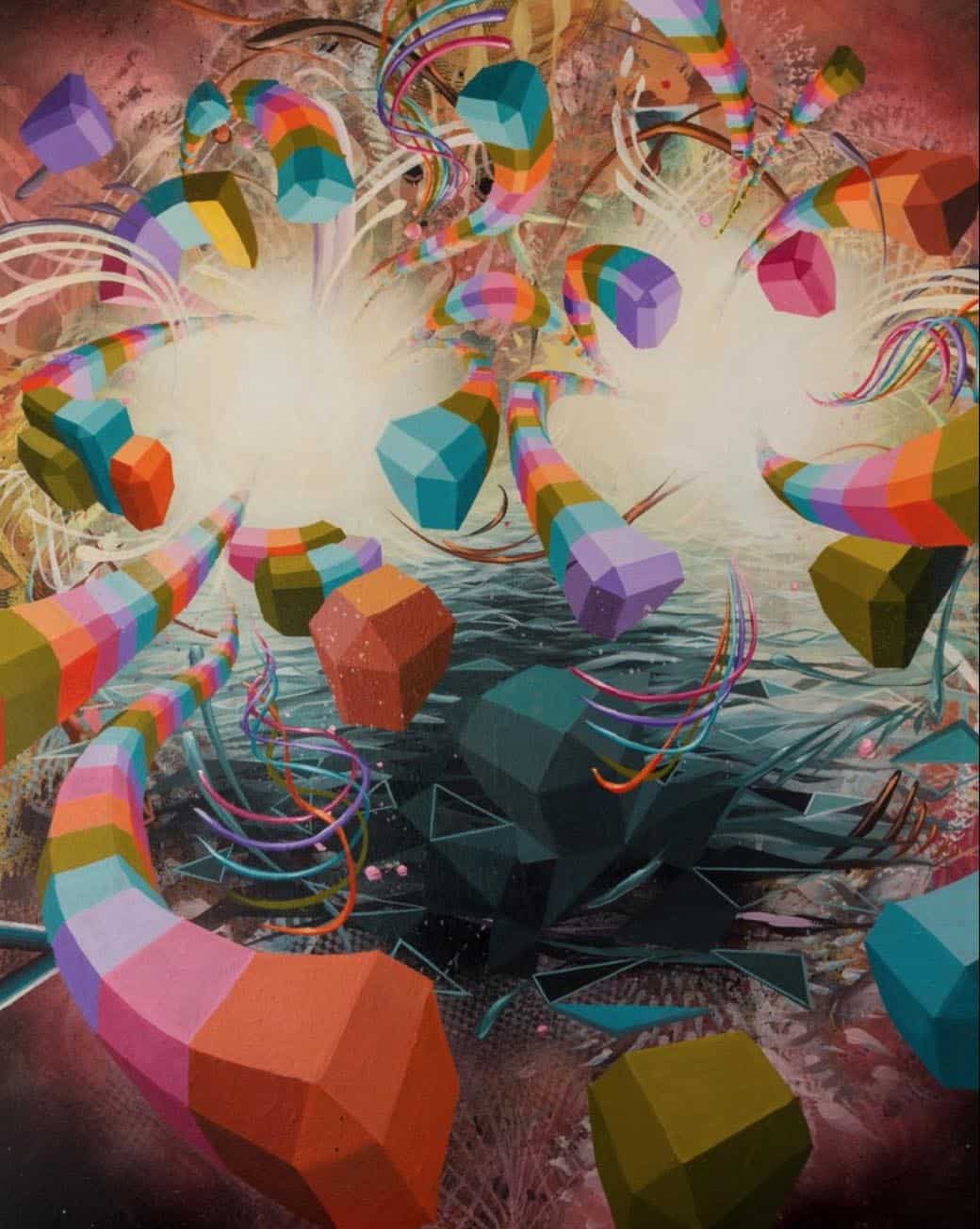
In San Francisco he found a thriving scene for lowbrow art inspired by the fresh emergence of Juxtapoz Magazine from the chaotic Californian skate and surf and hotrod underground. He hung his comic and graffiti inspired paintings at a coffee shop, and next day the owners called him to tell him he had sold three pieces, paying his rent for the month. Encouraged to take his art seriously, he enrolled at the San Francisco Art Institute, which he disliked for its old-hat insistence on concept art and cultural Marxism, but he became fascinated with creating installation environments merging psychedelic beauty with deconstruction enveloping people in a three-dimensional world of color and fragmented forms. His vivid and uplifting messaging did not play well among the pretentions of the avant-garde art elite. Nevertheless, at the Institute he met Robert Williams and other artists from the pop-surreal scene and began building his reputation as a force in the nascent new psychedelic art world.
When the dot com bomb dropped on San Francisco in the nineties it changed the face and feel of the city forever. Soule left for New York, but found the same problems there, and felt alienated by the vapid Disneyfication of the city, which lacked depth or meaning. He rented a space in a shared studio but noticed that he was the only artist using it full time. Having a studio in the city seemed to be a necessary status symbol for the cool set, like an unused gym membership. After a few years he left for a few years in Portland, Oregon, then he returned to San Francisco. Frustrated again by city life, he abandoned it forever for a forest homestead close to Nevada City in the California Sierras, where he lives today in the idyllic silence of the trees and mountains with his partner, his chickens, his dogs and cats.
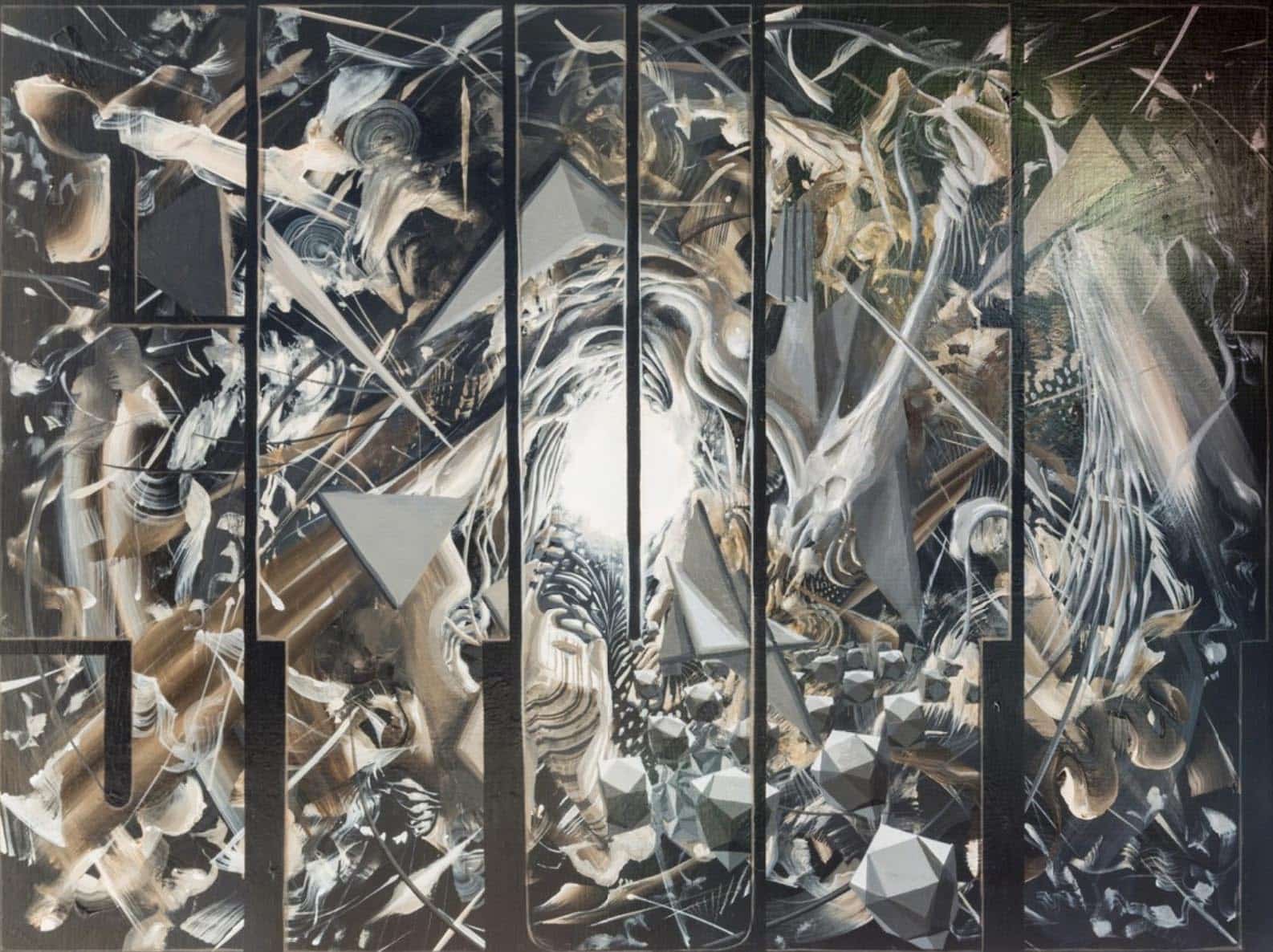
Soule begins his paintings with color, identifying a satisfying palette which allows him to find subtle harmonies and balances as he creates order from chaos. Soft abstraction leads the composition, and creates opportunities for Soule to find solutions to the painting. The complex patterns and beautiful structures which emerge resemble memories of the visionary entities and shapes of a psychedelic experience, shimmering and sliding through the picture. His light shapes are delicate and fragile, crystalline and reflective, but they are also forgiving and welcoming, and endlessly fascinating. Soule is at the heart of the unique metaphysical abstraction found among the artists of The Chambers Project, who paint with new psychedelic color, depth and elegance. His paintings belong to the otherworld.
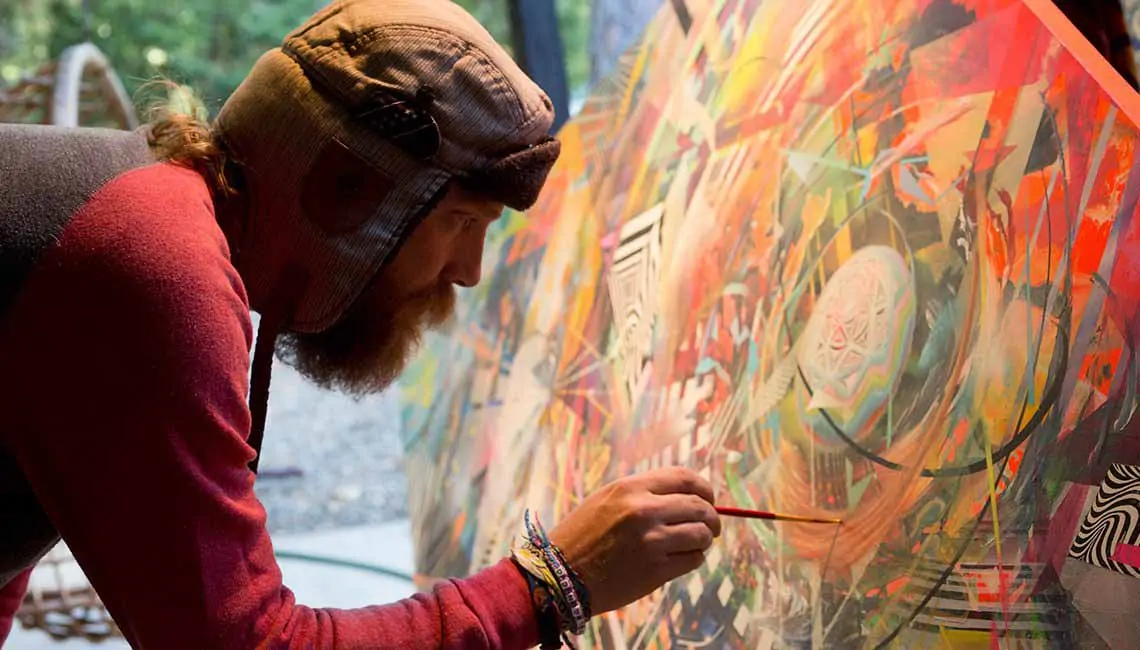
Soule’s mother left Colorado, and he learned to fend for himself. He took dead-end jobs at Subway and Hobby Lobby, where he worked the stock room, a handy source of liberated art supplies. He rented a small studio space in Manitou Springs, and began painting demented cartoon characters, and graffiti and skater inspired imagery. Inspired by old copies of Cracked, and Crazee, and Mad Magazine he collected from flea markets and yard sales, he began breaking down his characters as if they were disintegrating under the eye of psychedelia. He discovered Vaughn Bodē’s Cheech Wizard character in Zap comics, and loved the paintings of Barry McGee, KR One, and Reminisce, who were raising commonplace bubble letters to new levels of complexity and sophistication. There was little interest in outsider art, then, and Denver’s galleries and museums doors were closed to him, but his early experiences of painting on the streets had accustomed him to the liberating potential of self-made exhibit spaces and he began opening shows in his studio.
During the nineties the Grateful Dead band played Denver two or three times each year, and the punk, hippy and skater tribes of the alternative underground merged, each contributing their aesthetic to street-painting Soule’s creative vision. A thriving alternative psychedelic culture evolved and, at its center, he began creating startling paintings merging the hard edges and brightness of graffiti with comic characters and hallucinatory fragmentation.
The New School Art Tribe disintegrated as its members left, drawn by the hard lures of degrees and jobs and drugs, and Soule was shocked at the speed of change. He spontaneously abandoned Colorado when friends told him they were leaving for California next weekend, and he realized Denver had never really been his place. He quit his stock room job, picked up his last Hobby Lobby check and a backpack, and arrived in San Francisco with a sleeping bag, a week’s pay, and a short-term space on his friends’ couch.
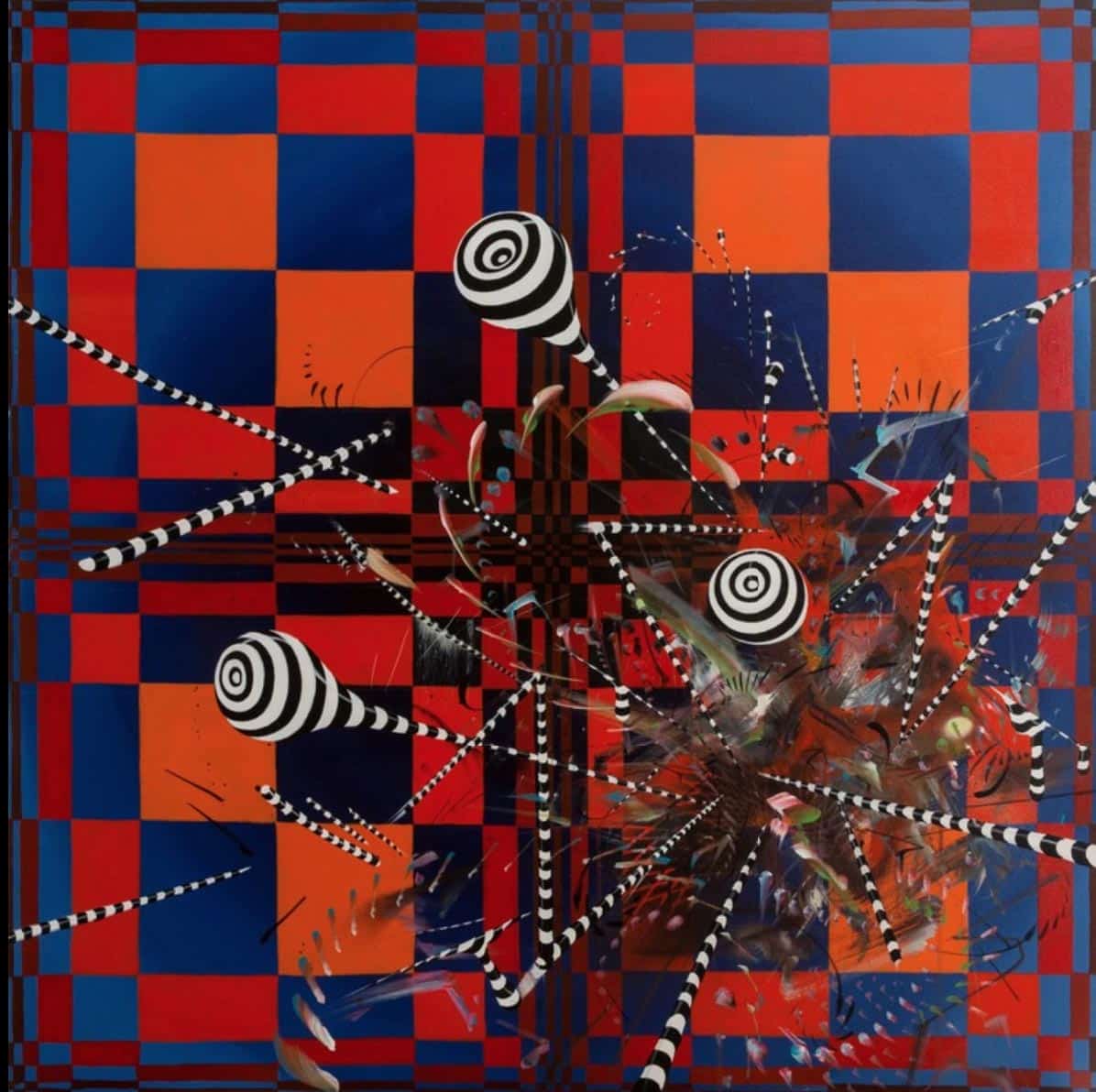
As Soule changed, so did his art. The urban figures which began his creative journey disintegrated long ago and fragments of them became landscapes, and geometric patterns of incredible complexity gradually dominated the compositions. He completely discarded the conventions of the ordinary art world and pursued his own path into psychedelic abstraction. In the forest he is tuned to the harmonies of nature, and the clashing cacophony of concrete and cash that pushed him away from the city have gradually faded from his work, which has developed a gentle openness to the sublime forces which shape the conscious world. Deep structures emerged from within the illusory space, rising weightlessly from the rich gravity of the luminous aethereal plane he seems to access and observe. There, he is witness to the birth of elemental forms, intricately folding over each other as they come into being, caught at the moment of becoming, and he is our intermediary into the ages.
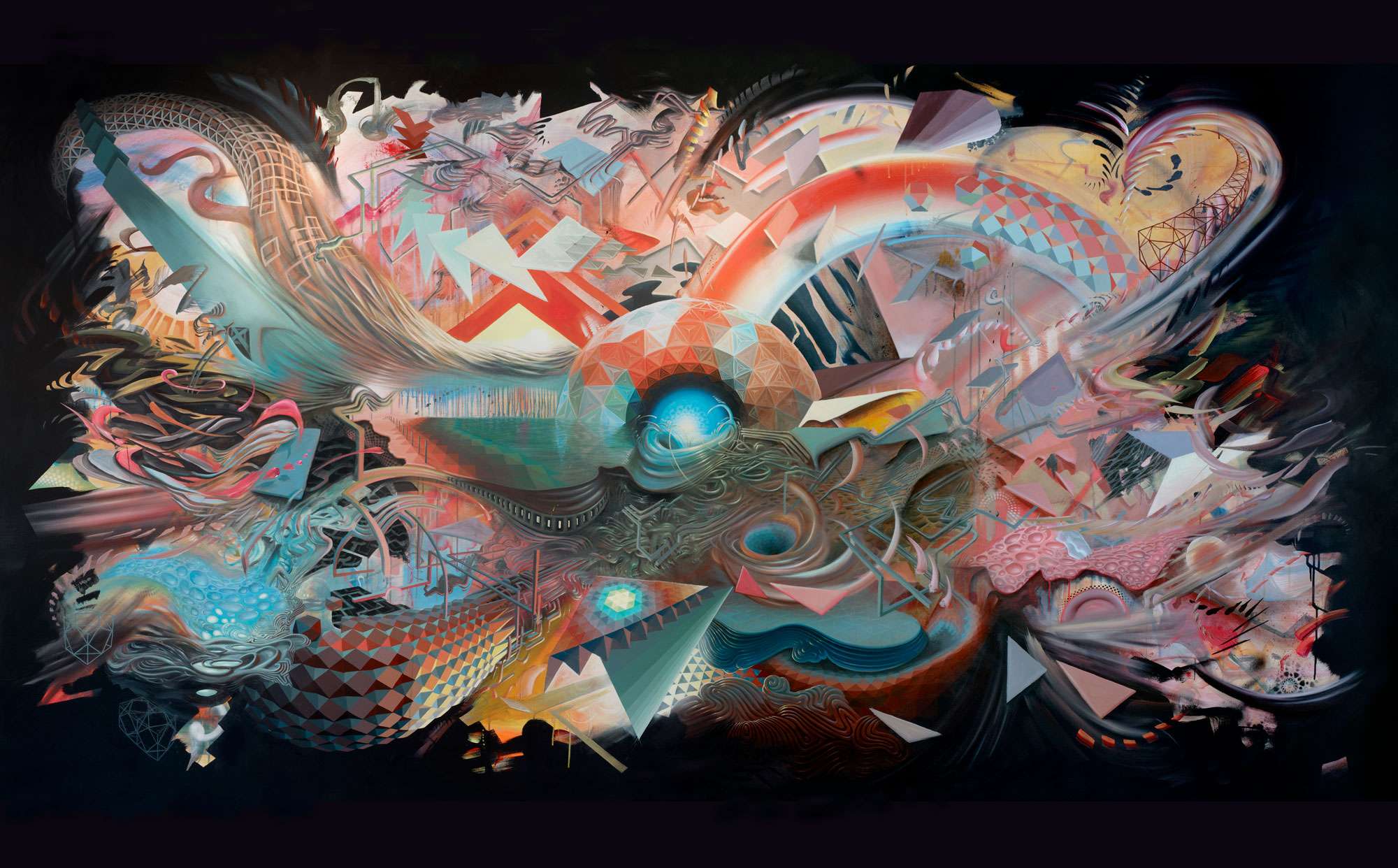
Drawings
Paintings
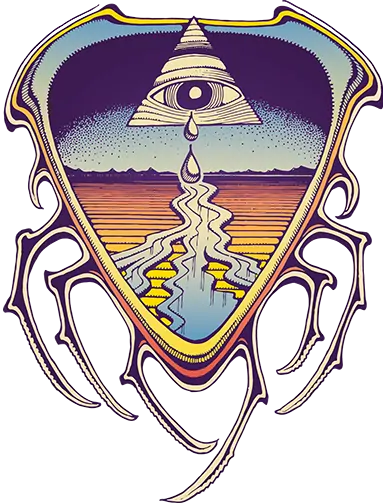
Damon Soule
Merchandise
Past Events
Press
ARTISTS
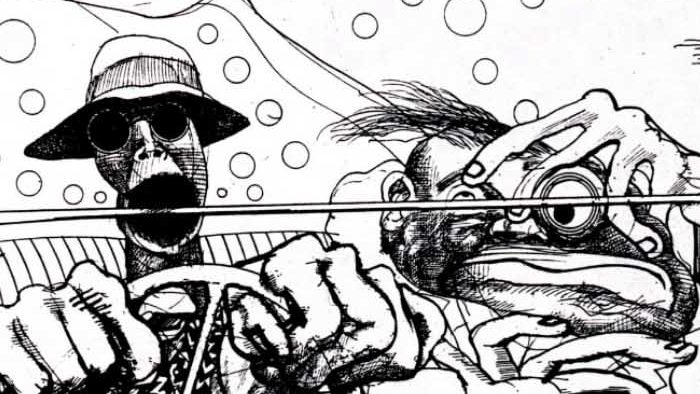
Ralph Steadman
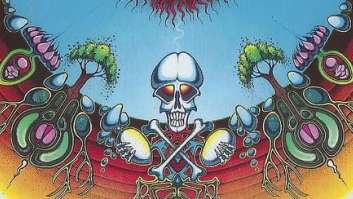
Rick Griffin
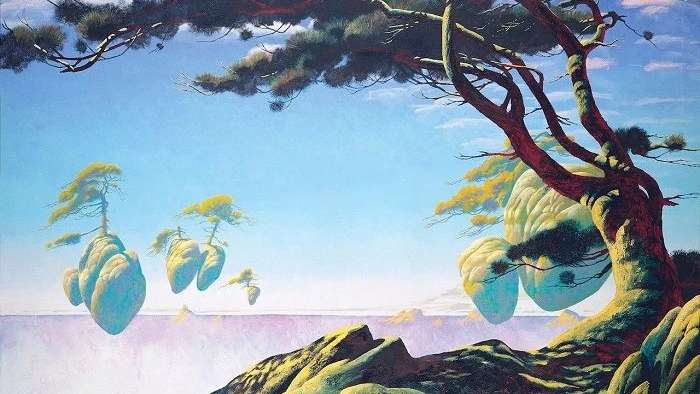
Roger Dean
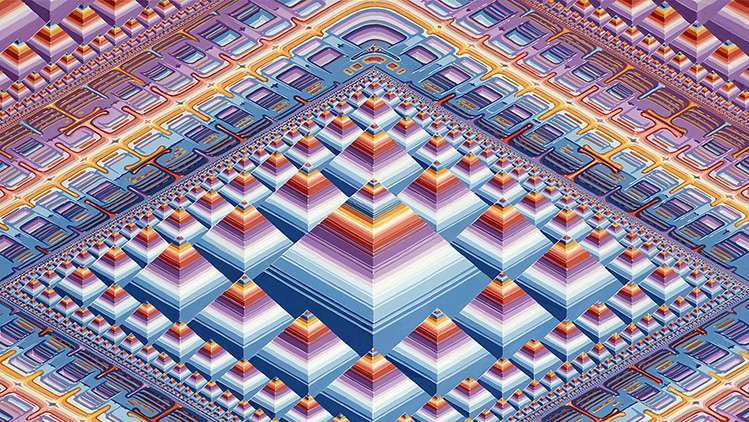
Colin Prahl
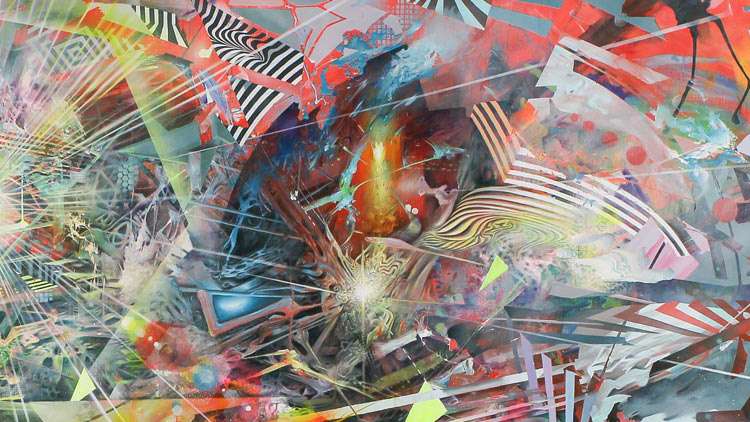
Damon Soule
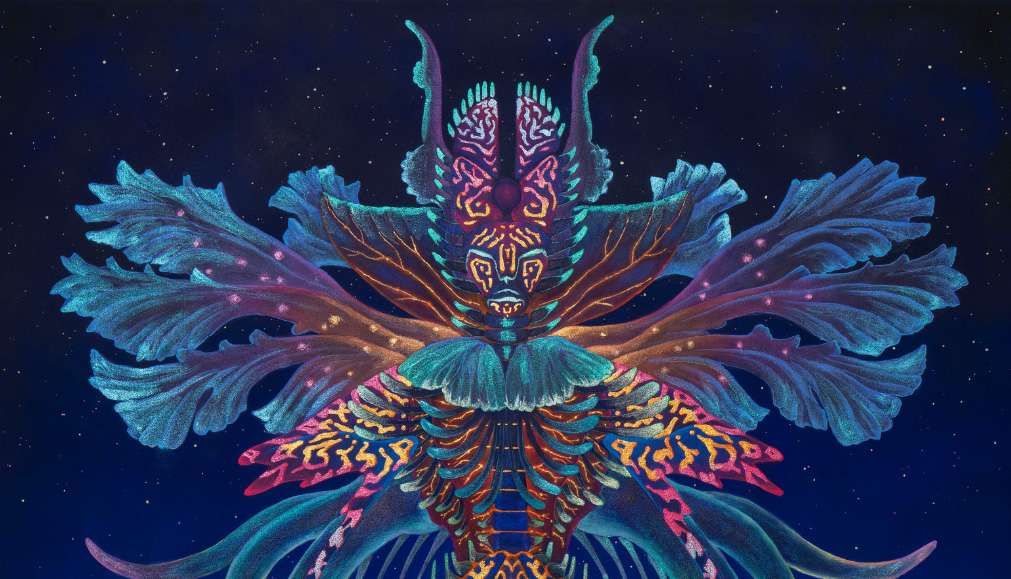
Freyja Dean
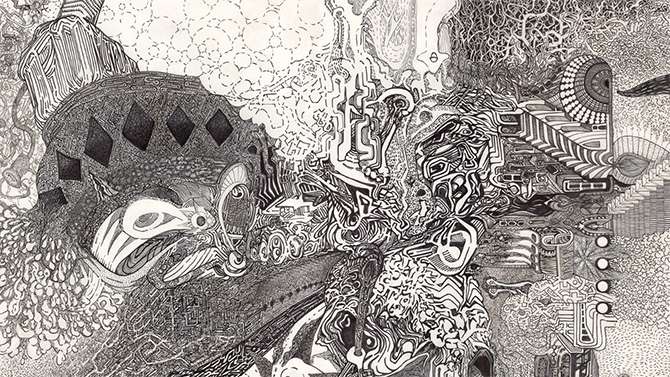
Jacaeber Kastor
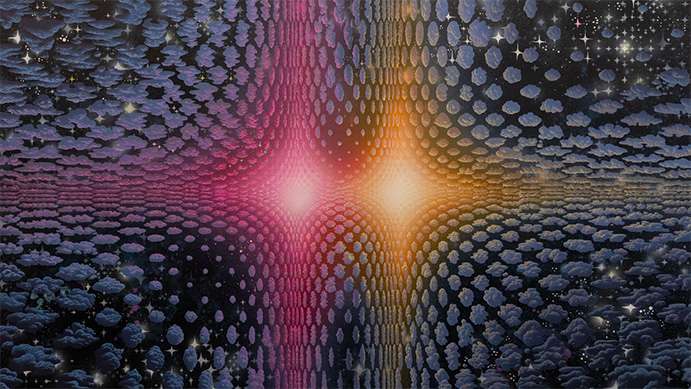
Justin Lovato
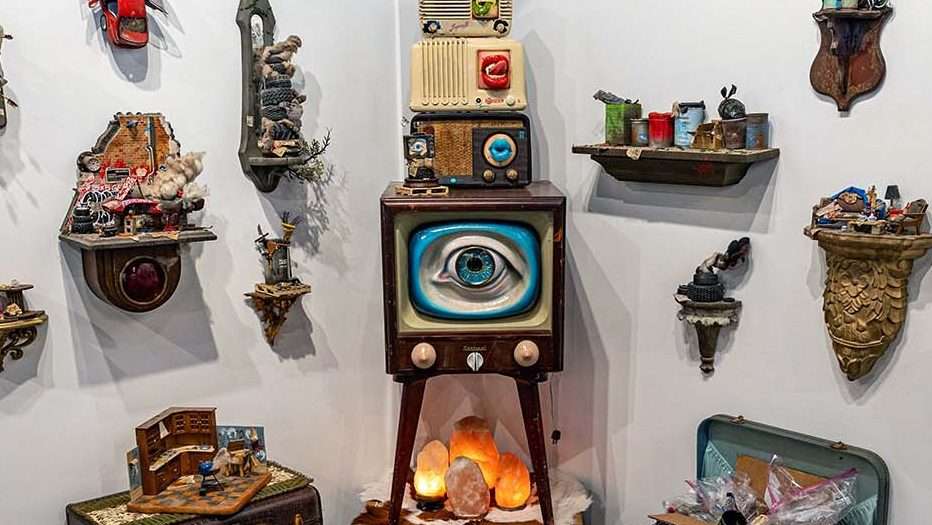
Leighton Kelly
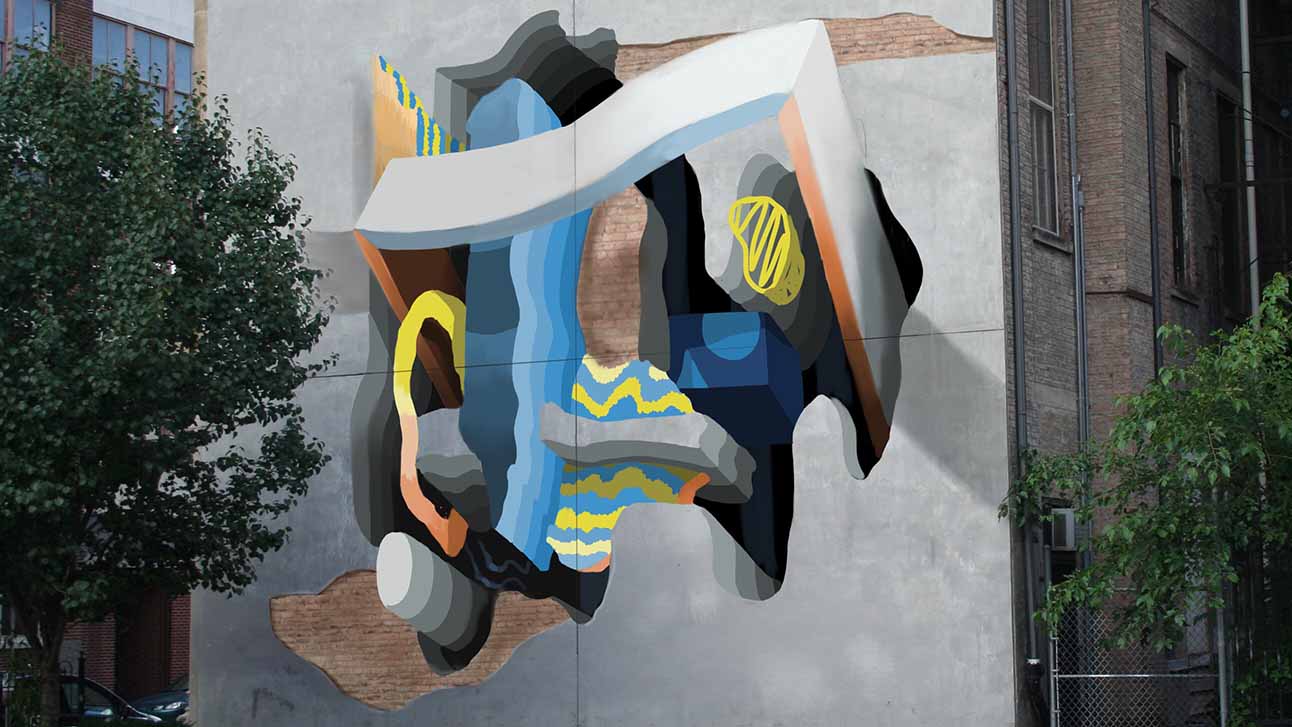
Leans
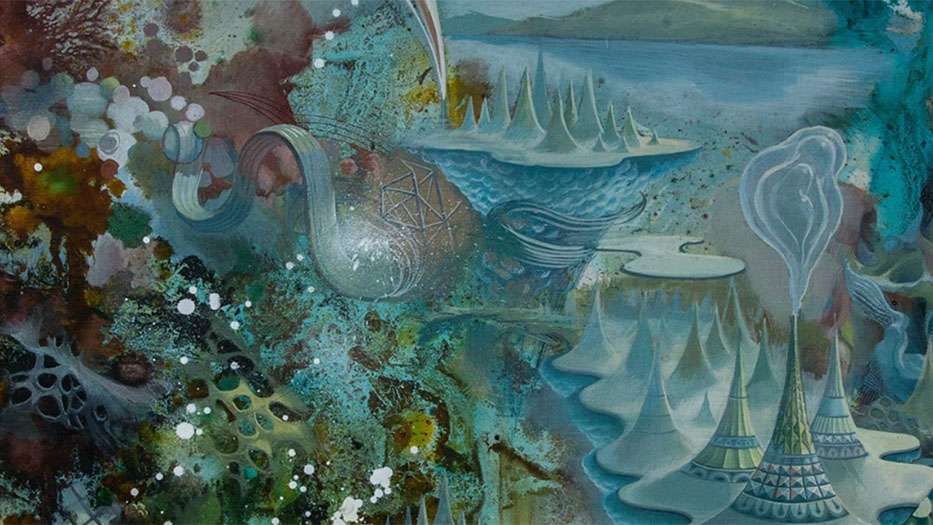
Mars-1
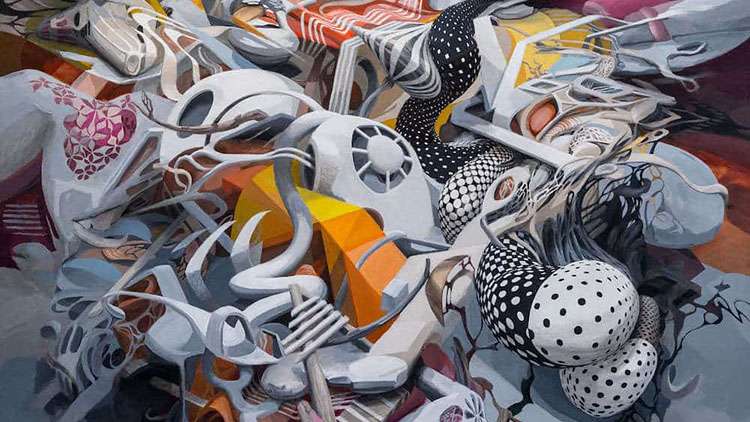
Oliver Vernon
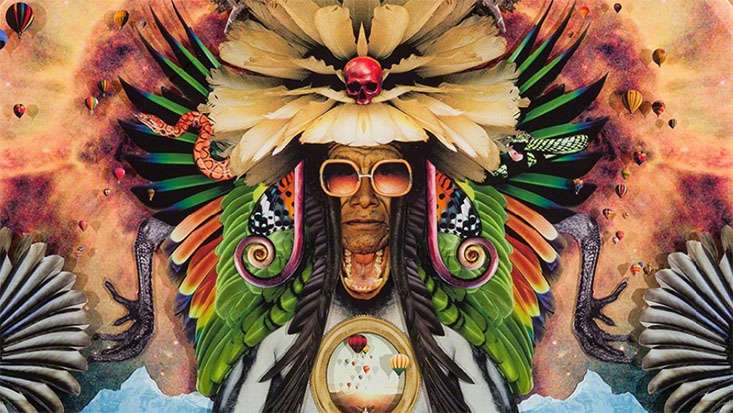
SebastiAn Wahl
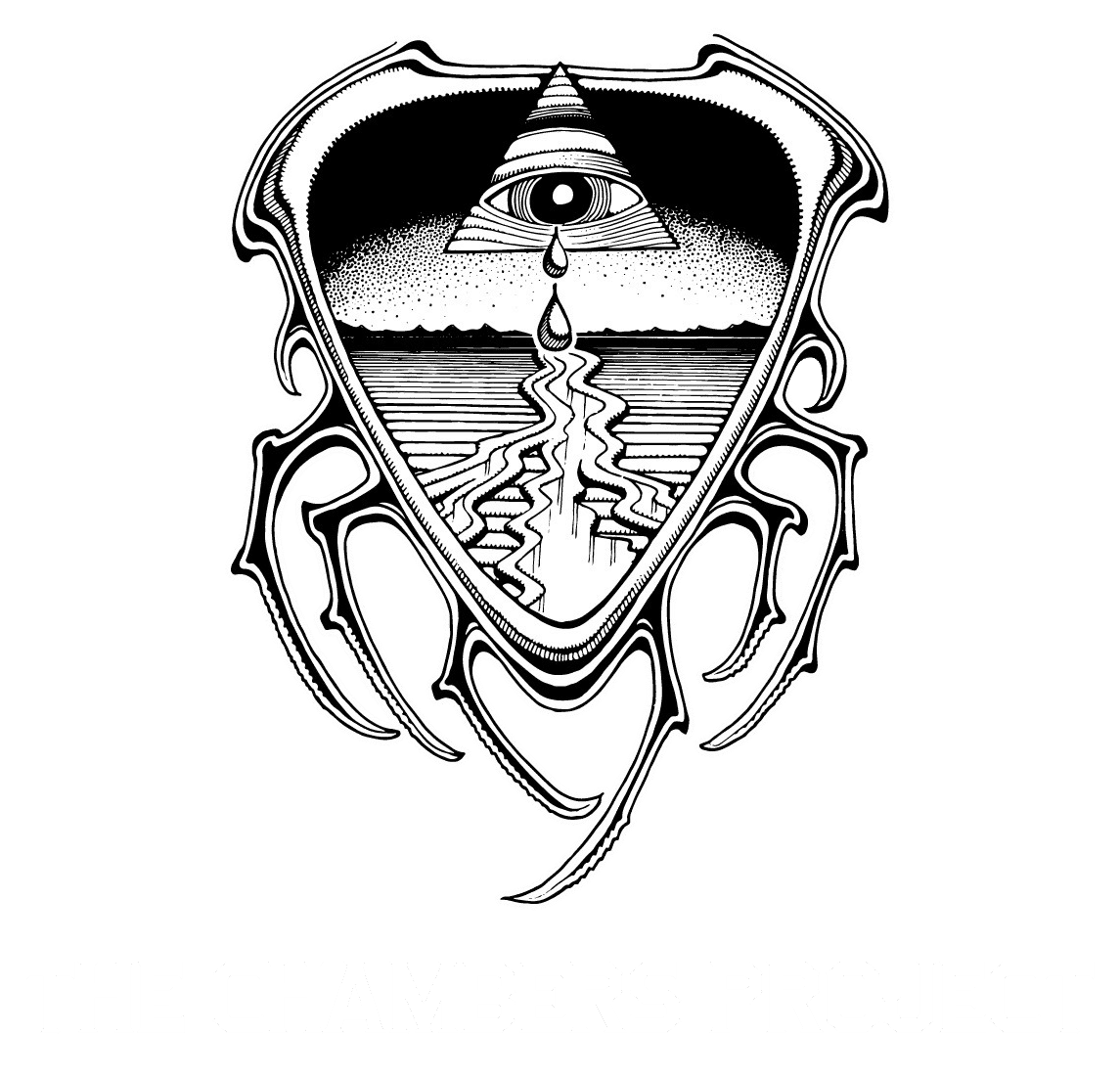
LiquidSiteDesign












